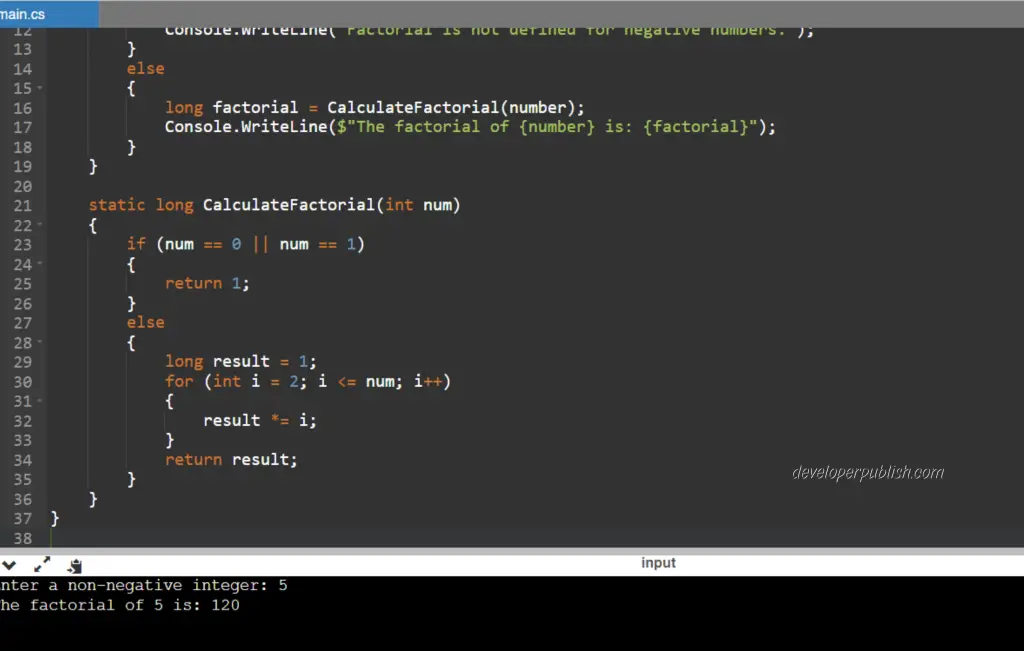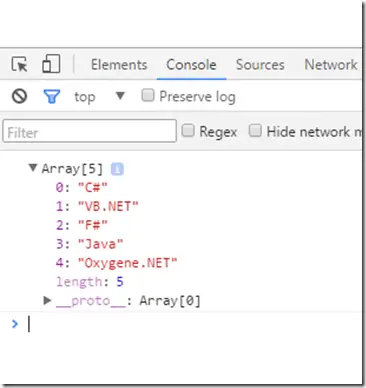In this example, we’ll create a C# program to calculate and display the factorial of a given number, showcasing the language’s capabilities in handling mathematical operations and loops.
Problem Statement
Write a C# program to compute and print the factorial of a given non-negative integer. The program should take an input number and calculate its factorial, which is the product of all positive integers from 1 to the given number.
C# Program to Print the Factorial of a Given Number
using System;
class Program
{
static void Main()
{
Console.Write("Enter a non-negative integer: ");
int number = Convert.ToInt32(Console.ReadLine());
if (number < 0)
{
Console.WriteLine("Factorial is not defined for negative numbers.");
}
else
{
long factorial = CalculateFactorial(number);
Console.WriteLine($"The factorial of {number} is: {factorial}");
}
}
static long CalculateFactorial(int num)
{
if (num == 0 || num == 1)
{
return 1;
}
else
{
long result = 1;
for (int i = 2; i <= num; i++)
{
result *= i;
}
return result;
}
}
}Input / Output




